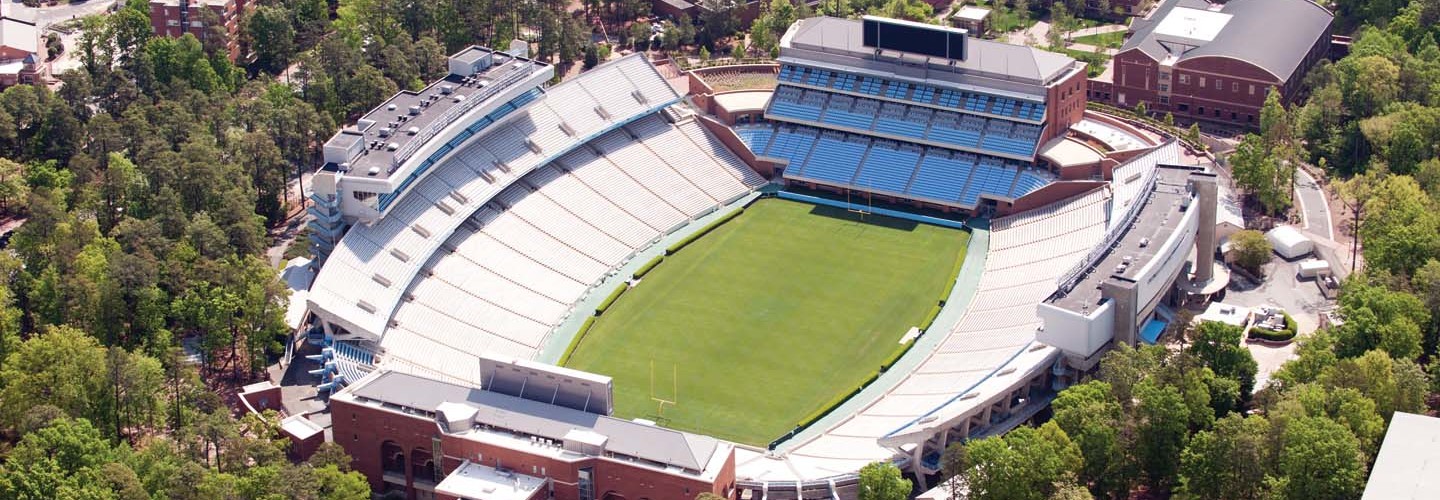EDTECH: What are some of the key IT challenges and demands impacting stadium venues today?
Wittnebert: College venues are in some instances larger than the top sports venues, and many are not in major metropolitan areas, meaning traditional cellular carriers may be less sophisticated and robust. As a result, robust Wi-Fi networks are necessary.
Student demographics also drive significantly more network demand. Today, we’re seeing that 60 to 70 percent of the people coming through the turnstile are using the available bandwidth, especially since in some rural areas you can’t even send a text message in some cases.
Additionally, Wi-Fi networks are critical for things like stadiumwide emergency communications, instant replays and being able to pay for your concessions before you go to the concession stand. Colleges are looking for ways to shift their transactions to digital formats.
In many cases, however, colleges face challenges in dealing with historical societies or government entities that have to approve facilities modifications and the funding for it. The more streamlined the deployment, the more likely the approval.
FIND OUT: How to know if your campus is ready for Wi-fi 6.
EDTECH: How have stadium Wi-Fi needs evolved?
Wittnebert: In 2012, the question was, “How do we get coverage?” Today, stadiums can host more than 100,000 people, so we have to focus on planning for capacity from a network perspective. Consumers are more intelligent and tech-savvy. Now, the demand is toward excellence to make sure people can do what they want, when they want with their mobile devices.
When it comes to our utilization numbers, the take rate — which is the number of devices on the network compared with the number of people that show up — has continued to grow but is slowing down. The total amount of bandwidth used by fans, meanwhile, is tripling or quadrupling year over year. They’re pushing so much more data through social media, video and cloud-based applications.
Another big thing that’s driving demand is sports gambling. While colleges are a bit behind professional sports, digital betting is going to be unstoppable in colleges very soon. But these bets require reliable, low-latency networks; if someone is late for an order with a hotdog, that’s one thing, but if a bet is late, that’s a problem.
DISCOVER: A checklist for closing the broadband gap.
EDTECH: What do colleges need to provide comprehensive Wi-Fi coverage?
Wittnebert: Put simply, the closer you are to an access point, the better performance you’ll have. The irony here is that the cheap seats are the easiest ones to cover; the ones closest to the field are more challenging. A huge part of what we do is develop custom-built, stadium-ready access points that hide in the stadium.
For example, we work to create access points that we can hide under a bench seat and help get performance closer to the fans. Another mounting location for access points is overhead. We’ve created all-in-one units with a single form factor with a single cable and bracket that’s configurable for college stadium needs.
You also need infrastructure that stands up to college stadium conditions — all of our equipment is beer-, soda-, rain- and snowproof.
RELATED: Equipping colleges with sufficient network bandwidth across campus.
EDTECH: Beyond improving the fan experience, what benefits do stadium Wi-Fi networks offer for colleges?
Wittnebert: The regulations around Wi-Fi allow network owners to use that data to learn about fans. This provides complete contextual data about what fans are doing. Where do they hang out? How long do they stay in their seats? What are they purchasing? Colleges can also use this data to better monetize their applications by giving marketing and partnership departments the insight they need to make better business decisions.
Consider the example of Bitmoji. At an end-of-season debrief, teams found that Bitmoji ranked as one of the top five social media apps used by fans. Marketing teams used this data to create deals that allowed fans to wear their favorite team hat on their Bitmojis. Two seasons later, Apple created its own version, and the use of Bitmoji dropped off. Continual data collection provides the context for better decision-making, allowing colleges to meet fans on the apps they’re using.
LEARN MORE: Upgrading campus stadiums with the fan experience in mind.
EDTECH: Why is the fan experience so critical for colleges?
One thing that’s unique about colleges is that students are there for four years. If the school can build digital trust by providing reliable and robust access that lets fans engage in a meaningful way on their devices, they’ll keep coming back, and they’ll take that digital experience with them to their next devices or the next phases of their lives.
Brought to you by:










